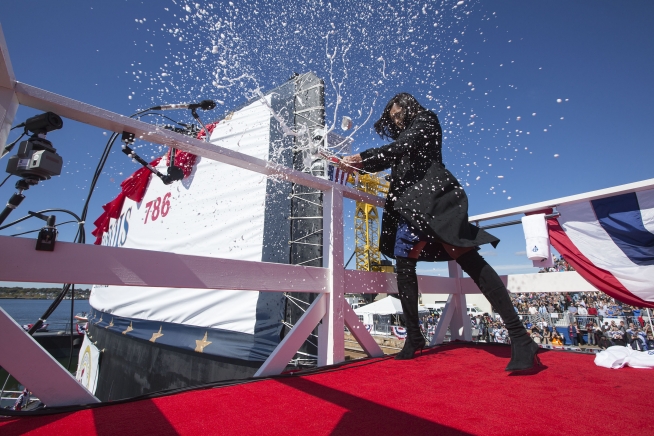When a new ship is put to sea, there’s a long-standing tradition of christening the vessel as one would a newborn baby. The ritual is comprised of several traditions, including when a bottle of champagne is broken over the bow. Where did this tradition come from?
In ancient Greek and Phoenician civilizations, religious ceremonies were performed for sea-going vessels to ensure their safety. As time progressed, ships were christened in ceremonies that officially proclaimed the name of the ship and protected them while at sea.
Ship sponsors are always women; in the UK, large military or commercial vessels are usually sponsored by royals or members of the nobility. In the United States, sponsors come in all forms, from First Ladies to prominent government officials.
So where did the idea of using champagne come from? The recorded use of champagne to christen a vessel is in 1890 when the USS Maine was put to sea. In 1891, Queen Victoria christened the HMS Royal Arthur with champagne, solidifying the association of champagne with power and elegance. Many vessels have been christened with other liquids, including whiskey and holy water, but champagne remains the standard to this day.
It’s traditionally supposed to be good luck to both the ship and her crew to break a bottle of champagne over the bow of a new vessel. If the bottle fails to break, superstition says that the vessel and its passengers may be cursed with bad luck. So if you attend a ship christening ceremony, pay close attention and hope that the bottle breaks!


Recent Comments